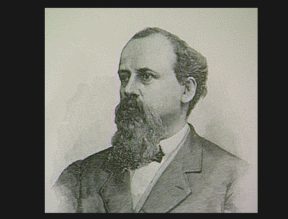![]()

A native of Massachusetts, Gustavus Vasa Fox was born in June 1821. He attended Phillips Academy, Andover, for two years before receiving an appointment at the United States Naval Academy at Annapolis. He was graduated from the Academy in 1841, and served for the next fifteen years on various government assignments, such as transporting troops during the Mexican War. He was promoted to lieutenant in 1852.
In 1856, Fox resigned from the navy, and married Virginia Woodbury, daughter of Levi Woodbury of New Hampshire, a judge and leading New England Jacksonian Democrat. Mrs. Fox's sister married Montgomery Blair, thus connecting Fox to another prominent political family. Until the secession crisis, Fox remained in Massachusetts as an agent of the Bay State Mills in Lawrence. The crisis, however, brought him to Washington, where he unveiled a plan for relieving the federal garrison at Fort Sumter. President James Buchanan rejected his proposal, but Lincoln's inauguration gave Fox a second and more favorable opportunity to present his project.
After the war began, Fox remained in Washington, serving as chief clerk to Navy secretary Gideon Welles. Then on August 1, 1861, he was appointed assistant secretary of the navy, the post having been created for him. In this position, Fox made a significant contribution to the Union effort. He suggested that Admiral David G. Farragut command the New Orleans expedition, and he was an early advocate of the ironclad Monitor, which he persuaded Secretary Welles to be used in action. After the war, he returned to the world of business, serving as agent of the Middlesex Company, in Lowell, Massachusetts, and then the firm of Mudge, Sawyer & Co., in Boston. He died in 1883.